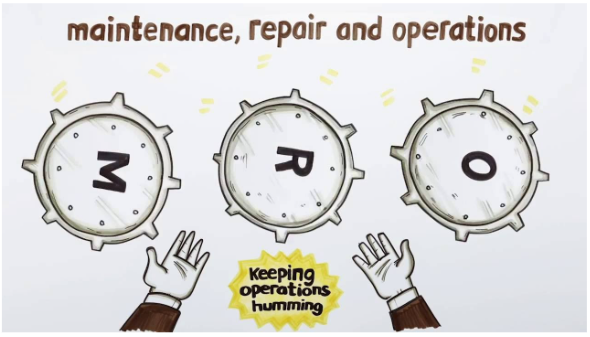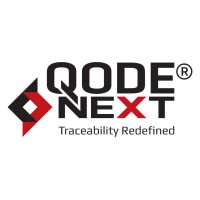
Introduction
Within the intricate realm of business operations, the meticulous management of Maintenance, Repair, and Operations (MRO) inventory becomes a linchpin for sustained success across diverse industries. Think of MRO items—spare parts, consumables, tools, and equipment—as the silent architects of a smoothly functioning operational landscape. This exploration peels back the layers of MRO inventory management, unveiling its essence, navigating through the manifold advantages it brings, dissecting the operational processes involved, sketching out strategies to refine MRO inventory, addressing common questions, and ultimately weaving together profound insights.
What is MRO Inventory Management?
MRO inventory, short for Maintenance, Repair, and Operations inventory, refers to a comprehensive stock of essential items, materials, tools, and spare parts that an organization maintains to support its day-to-day operations, maintenance activities, and repair processes. These items are critical for ensuring the continuous functioning of machinery, equipment, and facilities within an operational setting. According to Netsuite, MRO inventory includes a diverse range of goods, such as spare parts, consumables, tools, and safety equipment, which are strategically managed to minimize downtime, optimize operational efficiency, and uphold safety and compliance standards. Effective MRO inventory management involves strategic planning, accurate tracking, and proactive procurement to ensure that the right items are available when needed, thereby contributing to the overall reliability and performance of an organization’s assets.
Benefits Unveiled
Downtime Deterrent:
Meticulous MRO inventory management acts as a shield against operational downtime, ensuring swift access to critical spare parts during equipment malfunctions or breakdowns.
Financial Alchemy:
The magic of MRO inventory management unfolds in cost reduction spells—evading overstocking pitfalls, sidestepping stockouts, and conducting a symphony of procurement processes to yield substantial savings.
Productivity Pinnacle:
The nexus between operational teams and their tools becomes a catalyst for heightened productivity. Swift access to essential supplies empowers maintenance crews to troubleshoot without the shackles of waiting.
Lifespan Extension:
Regular maintenance, orchestrated by a well-tuned MRO inventory management system, emerges as a potion that extends the lifespan of machinery, bestowing a reprieve from premature replacements.
Regulatory Compliance Synchronization:
The orchestration of regulatory compliance and safety standards unfolds seamlessly through the meticulous maintenance of safety equipment and items crucial for compliance. This meticulous approach guarantees a workplace characterized by harmony and adherence to established standards.
The Symphony of MRO Inventory Management:
Preliminary Harmony:
Commence the journey with an introspective assessment of existing MRO inventory, identifying critical elements, gauging usage patterns, and foretelling potential risks lurking in the shadows.
Categorization Choreography:
Classify MRO items based on criticality, usage frequency, and lead time. This classification becomes the sheet music guiding the prioritization of inventory management endeavors.
Supplier Sonata:
Forge robust alliances with suppliers, negotiating terms akin to a well-conducted symphony. Discounts, delivery schedules, and flexible ordering options are the notes in this harmonious arrangement.
Inventory Tracking Symphony:
Institute an impeccable inventory tracking system, offering a real-time sonnet on stock levels. Regularly tuning into usage patterns facilitates the necessary adjustments in inventory levels.
Forecasting and Planning Crescendo:
The predictive ballet unfolds, leveraging historical data and analytical prowess to forecast the crescendo of future MRO needs. This proactive planning acts as a maestro’s baton, directing operations.
Audit Overture:
Conduct periodic audits as the overture to maintain the accuracy of inventory records. This diligent practice unveils discrepancies, allowing for timely corrections.
Typical Examples of MRO Inventory
Depending on the industry, MRO inventory usually consists of:
Production:
- New motors, belts, and bearings
- Coolants and lubricants
- Safety gear, such as goggles, helmets, and gloves
- Cutting tools and welding supplies
Medical Facilities:
- HVAC filters and replacement components
- Materials for cleaning and sanitation; supplies for maintaining generators
- Tools for building maintenance
Warehousing & Logistics:
- Spare parts for forklifts
- Conveyor belt parts and packaging supplies
- Signage and safety barriers
Businesses can better prioritise their stock management and procurement strategies by knowing which items are considered MRO inventory.
How to reduce MRO Inventory?
Data Optimization Algorithm:
Navigate through historical data with algorithmic precision, identifying sluggish or obsolete items through meticulous analysis. Opt for a strategic liquidation algorithm or engage in negotiations with suppliers, orchestrating a sophisticated solution for surplus stock.
Standardization Framework:
Harmonize the MRO landscape through a standardized array of items, simplifying the intricacies of the inventory orchestration. This meticulously designed simplicity guides a streamlined algorithm, enhancing the efficiency of procurement, storage, and maintenance processes.
Just-in-Time Inventory Optimization:
Execute an algorithmically orchestrated interlude of just-in-time precision, minimizing holding costs and playing a pivotal role in mitigating the risk of obsolescence. Precision algorithms become the defining element in this mathematical model of inventory management.
Supplier Integration Algorithm:
Consolidate suppliers with an algorithmic approach, leveraging the efficiency of volume discounts. This consolidated supply chain transforms into an operational algorithm, reducing administrative strains with each carefully optimized step.
Technology Integration Framework:
Integrate advanced technologies such as RFID, barcoding, and inventory management software to construct a technological framework. This framework of automation algorithms elevates accuracy, fine-tuning the efficiency of processes in a harmonious blend of technology and algorithmic precision.
Conclusion
Managing MRO inventory has ceased being a choice that competitive businesses in the expanding manufacturing and industrial sectors could choose to avoid in India. With the approaches provided in this guide, such as the categorization of the inventory and predictive analytics, consolidation of suppliers and just in time, companies will be able to save a lot of money without choosing to compromise their operation reliability.
The first step is to audit your existing MRO inventory, determine the important ones, and adopt a tracking mechanism. Proper MRO management is a paying investment that has yielded in terms of reduced downtime, carrying costs, and increased lifespan of the equipment.
Want to manage your MRO inventory better? The inventory optimization solutions provided by Qodenext allow companies to optimize their operations and save money.
FAQs
1. How do I determine the criticality of MRO items?
Determining the criticality of Maintenance, Repair, and Operations (MRO) items involves assessing their impact on production and operations. Items that play a pivotal role in preventing downtime or ensuring safety are typically considered critical.
2. What is the role of predictive analytics in MRO inventory management?
In MRO inventory management, predictive analytics plays a crucial role by utilizing historical data and statistical algorithms to forecast future demand. This proactive approach helps organizations optimize their MRO inventory and avoid disruptions.
3. How can I balance the cost of holding inventory with the risk of stockouts?
Balancing the cost of holding inventory with the risk of stockouts requires a careful analysis of carrying costs, lead times, and potential production losses. Implementing Just-In-Time (JIT) principles and leveraging advanced forecasting techniques can assist in finding the optimal balance.
4. Why is supplier relationship management important in MRO inventory management?
Supplier relationship management holds significance in MRO inventory management as strong relationships with suppliers foster better communication, reliability, and flexibility. This, in turn, ensures a consistent supply of MRO items and favorable procurement terms.
5. What are the key challenges in MRO inventory management?
Key challenges in MRO inventory management include finding the right equilibrium between quick access to critical items and the cost of inventory, addressing demand variability, and effectively managing a diverse range of items. Navigating these challenges requires a strategic and comprehensive approach to MRO inventory optimization.
6. What is my method of classifying MRO items on a basis of criticality and usage?
The categorization of MRO items is based on their level of importance to your business. Depending on the impact of their unavailability on production, you can classify them to be critical, essential or non-critical. As an example, components that may lead to the complete shutdown of a machine are critical whilst non-critical components are general consumables or office supplies. This aids in efficient prioritizing procurement and storage.
7. What are the MRO inventory management KPIs?
Inventory turnover ratio, stockout rate, carrying cost percentage, supplier lead time and percentage of obsolete stock are some of the most significant KPIs. Regular monitoring of these indicators will allow you to identify your inefficiencies, minimize your inventory, and maintain the operation of your maintenance activities in a cost-effective and efficient manner.
8. What is the distinction between MRO inventory and raw materials inventory?
The major distinction is their aim.
- Raw materials inventory entails products which are directly utilized in the production of your product.
- MRO inventory, however, comprises of tools, spare parts, lubricants or cleaning supplies that ensure machine and operations continue.
Raw materials are revenue generating but MRO items ensure productivity in the back room.
9. What is the advantage of using technology such as ERP, IoT or RFID to manage MRO inventory?
The current technologies such as ERP systems, IoT sensors, and RFID tags provide real-time tracking of stock and usage rates and supplier performance. They assist you in monitoring all the items precisely, minimize human mistakes and anticipate maintenance requirements in the time when the failures do not happen. To the point, technology transforms MRO management into a pro-active approach rather than a reactive process.







